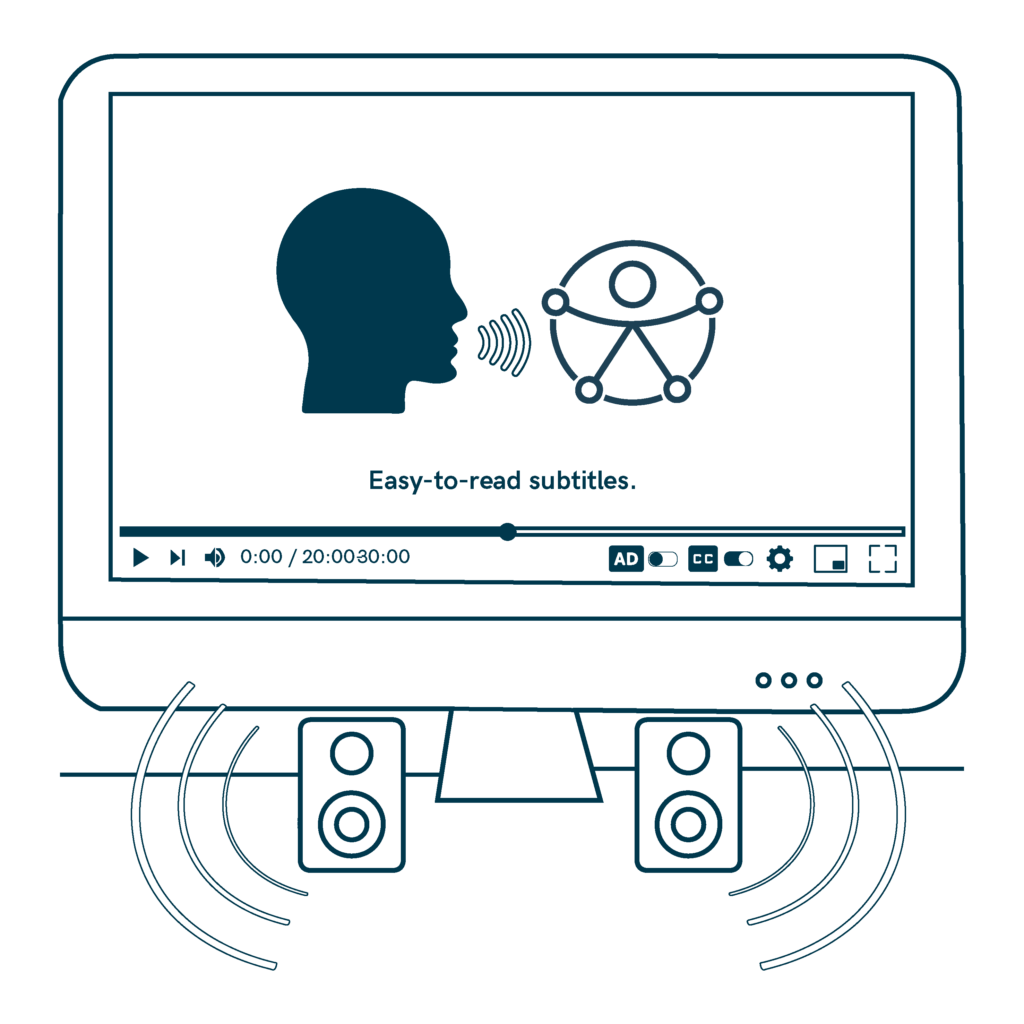Video Information
Videos are a powerful tool for conveying information, but they must meet certain standards to be effective. Here are some guidelines to optimize your audiovisual content

- Make sure the narration is at an appropriate pace, avoiding speaking too fast.
- Don’t use effects like slow or fast motion that could hinder comprehension.
- If using a voiceover, make sure it matches perfectly with what is shown on screen.
- Avoid overly dark or light screens that make it difficult to view the content.
- Always use high-quality video and sound to ensure a good viewing and listening experience.
- Ensure sound and fullscreen buttons are easily visible and accessible.
- Informative videos should last no longer than 20 to 30 minutes to avoid overwhelming viewers.
- Clearly explain any changes in the recording location to avoid confusion.
- Use easy-to-read subtitles, and offer the option to turn them off if needed.
- Use simple language in audio descriptions and allow the option to disable them.
Sources
- https://commission.europa.eu/resources-partners/europa-web-guide/design-content-and-development/accessibility_en
- https://www.w3.org/TR/2008/REC-WCAG20-20081211/
- https://spet.indimoproject.eu/recommendations/
- https://www.audioeye.com/accessible-web-design/download-pdf/
- https://www.codigotecnico.org/pdf/Documentos/SUA/DccSUA.pdf
- Carers
- Children
- Cognitive
- Cognitive abilities
- Decolonial perspective
- Digital
- Digital barrier
- Enviroment
- Environmental
- Gender and generations
- Gender perspective
- Hearing impairment
- Low-education
- Low-income
- Older people
- Other
- Physical abilities and features
- Sensory and Physical
- Socioeconomic
- Visual impairment